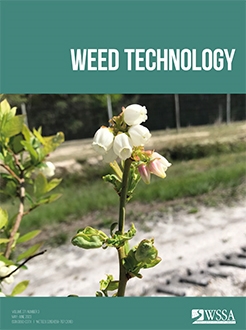Waterhemp has evolved resistance to seven herbicide modes of action in the United States and to five in Canada, which limits weed control options for producers. The objective of this research was to quantify the level and duration of residual control of multiple herbicide-resistant (MHR) waterhemp with five Group 15 herbicides (acetochlor, dimethenamid-p, flufenacet, pyroxasulfone, and S-metolachlor) applied preemergence in a non-crop area. Four field trials were conducted over a 2-yr period (2021, 2022) in southwestern Ontario, Canada. By 4 wk after application (WAA) 91% of waterhemp had emerged in the nontreated control area. The numerical control of waterhemp with all Group 15 herbicides, with the exception of pyroxasulfone, was greatest at 4 WAA, then control declined. Flufenacet provided the lowest waterhemp control; dimethenamid-p and S-metolachlor provided intermediate control, and acetochlor and pyroxasulfone provided the highest control. Waterhemp control with pyroxasulfone peaked at 6 WAA with 99% and declined to 77% at 12 WAA. Flufenacet (low and high rates) was predicted to reduce waterhemp emergence by 50% for 42 to 44 d after application (DAA). Dimethenamid-p, S-metolachlor, and acetochlor (both formulations and three rates) were predicted to reduce waterhemp emergence by 80% for 36, 43, and 33 to 51 DAA, respectively; in contrast, pyroxasulfone was predicted to reduce waterhemp emergence by 80% for 82 DAA. This study concludes that of the Group 15 herbicides evaluated, flufenacet provides the lowest and shortest residual control of waterhemp, and pyroxasulfone provides the highest and longest residual control of waterhemp.
Nomenclature: Giant foxtail; Setaria faberi Herrm.; pigweed; Amaranthus spp.; velvetleaf; Abutilon theophrasti Medik.; waterhemp; Amaranthus tuberculatus (Moq.) J.D. Sauer; woolly cupgrass; Eriochloa villosa (Thunb.) Kunth.






